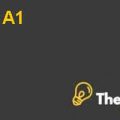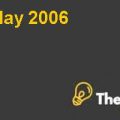Abstract:
NII holdings established in 1995. The main operations of the company were initiated from Latin America and after a passage of time, it expanded the operations to Chile, Argentina, Brazil, and Mexico. The company was facing the competitive pressures which resulted in the weak financial performance of the company. It focused on business customers located in urban areas. During 2012, thecompany was facing huge competition and because of that company reported aloss of $765 million.The company has spent a lot of money on marketing and sales. During 2012, marketing and sales have been increased by 14% and because of that company’s EBITDA is decreased by 14% in the FY 2012. It focused on business customers located in urban areas. The company was more focusing on the debt financing, as they have 75% debt to equity ratio and its finance cost was very high and that become one of the reasons for its losses. Rafael D’ Anconia uses CAPM to find the cost of capital of the Nextel Peru. By using CAPM model, the cost of capital is $5.1 million with the beta of 0.65 and cost of equity of 4.12% that was used to find the WACC and WACC is 3.19%. NII holdings should accept the purchase price of $400 million as its cost of equity is only $5.1 million.
Introduction
Rafael d’ Anconia from Andean Capital advisor was assigned a job to review the cost of capital Nextel Peru as Entel was trying to acquire Nextel Peru and gave the purchase price ranging from $395 million to $415 million. Nextel Peru is the subsidiary of parent company NII holdings.
NII holdings have two options take it or leave it. Nextel Peru’s competitive advantage is its customer care service and pushes to talk service. Nextel Peru comprises of 6% of the company’ revenues and 15% of the overall customer base. Nextel Peru spent a lot of money on marketing and sales and because of that, they have reported aloss of $765 million in 2012.
Findings and Discussions
Cost of equity using Peru market return:
If Peru’s market return is used for the calculation of thecost of equity, then the cost of equity is calculated as 4.15%. This cost of equity is calculated by taking the local market return of Peru and applying the beta equity of the company to market risk premium and then adding therisk-free rate of return to it
Cost of equity using USA market return: If Latin America’s market return is used in the calculation then the cost of equity of the company will be 1.85% i.e. its investors demand a return of 1.85% in return of the capital invested in the company. D Anconia should be concerned with the fact of whether Peru is integrated or segmented because this will create a large difference on the WACC of the company to be used to appraise the investments to be made as the Capm would be calculated accordingly and the cost of equity will be accordingly...........
This is just a sample partical work. Please place the order on the website to get your own originally done case solution.













